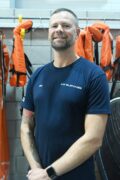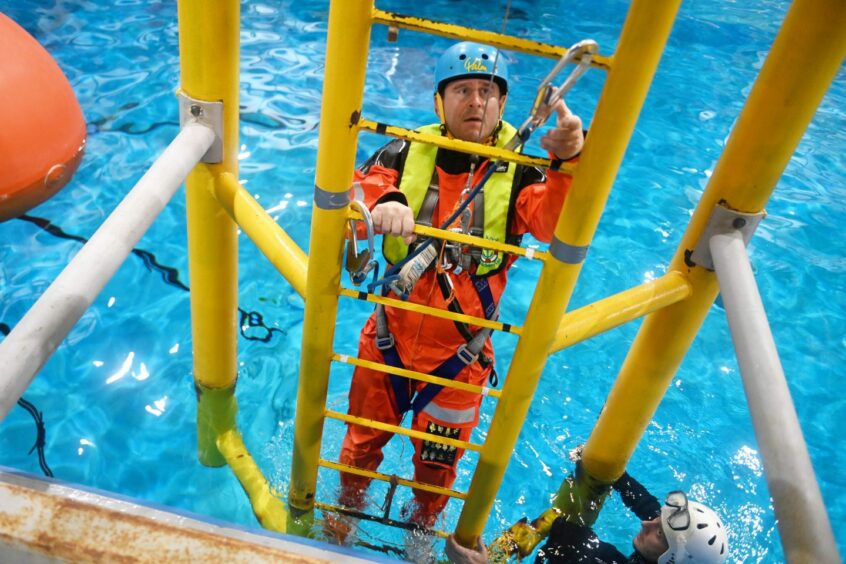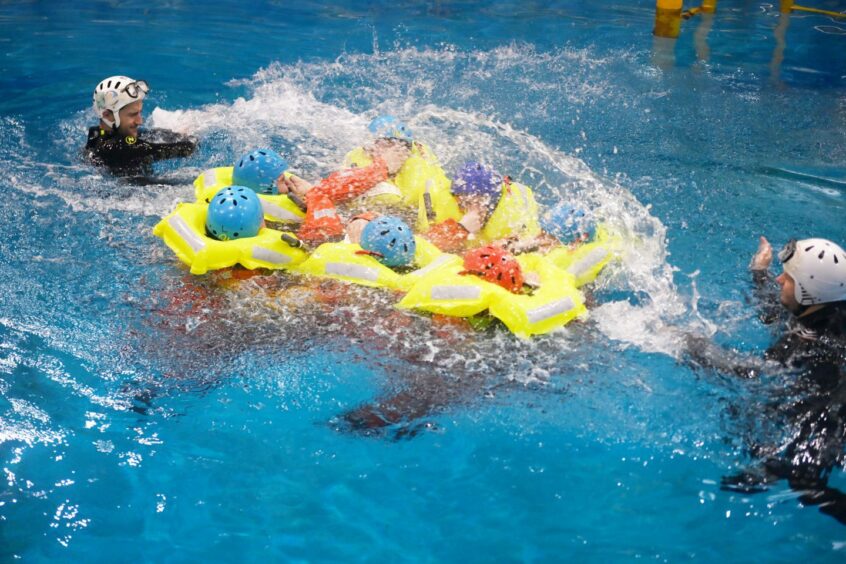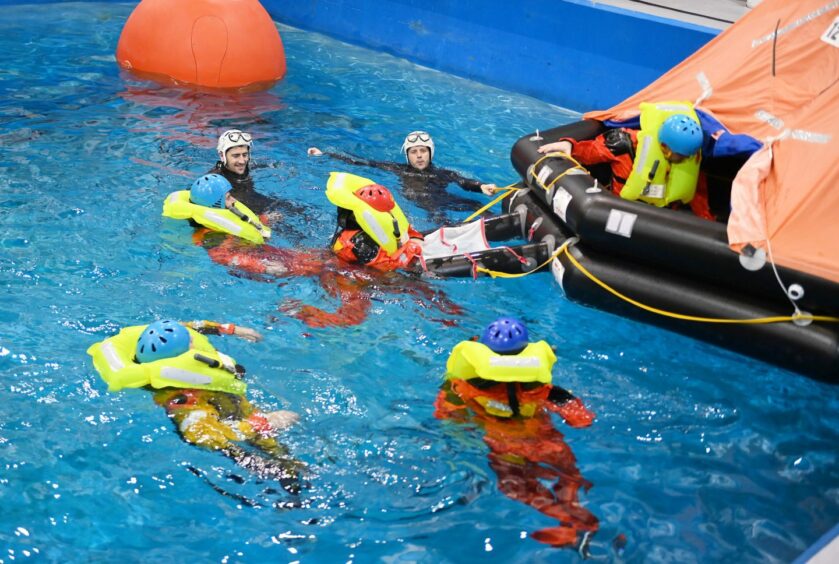The UK has set targets to reach net zero by 2050 and with that comes the energy transition, many people are starting to train in the renewables sector to take advantage of the growing job market.
Much like work in the offshore oil and gas sector, training is required in industries such as offshore wind.
Energy Voice spent time at AIS Survivex’s facility in Dyce to speak with delegates of the GWO 5-day course on the final stage of training, sea survival.
Of the six people taking part in the course on the day our journalist visited, four delegates had never been on the course before and two were doing “refresher training”.
Mike Mason, senior survival instructor at AIS Survivex, said: “Four of the guys are
doing the whole package, so they’ve been here the whole week.
“They have done working at heights, manual handling, first aid, fire fighting and today they have their sea survival module, so it’s been quite a busy week for the initial guys.”
Throughout the week the delegates had spent time in classrooms learning skills that they could put into practice on the day they spent at the poolside.
One of the delegates on the day, Claudia Auldridge, who works for Vestas on the SOV for Seagreen windfarm told us: “A long time ago I worked in oil and gas, I moved into offshore wind in 2010.”
When asked why she made the move from fossil fuels to renewables over a decade ago Ms Auldridge said “it’s interesting,” adding: “It was a wonderful opportunity for document control and being involved when I had no technical training but I had management and administration experience, which I could transfer over.”
Another delegate, Stephen Grant, has been working in the offshore oil and gas sector since 2001, he said: “I am an NDT technician so I’ve been doing offshore survival stuff every four years for that but this is my first time doing GWO.”
Much like Ms Auldridge before him, Mr Grant is making the jump to offshore wind. When asked why he has made this decision, the technician said: “There are a lot more jobs coming in the wind industry now.
“North Sea oil and gas jobs aren’t as forthcoming as they used to be so now I’m looking elsewhere and I can still use my same skillset.
“I just have to do my GWO training then I can go and work on the wind farms.”
For Mr Grant the transition from oil and gas to wind has been an easy one, speaking about the training, he said: “A lot of the elements are the same so its more or less different strokes but its the same sort of thing if you know what I mean.”
Sea Survival
All of the sea survival training was undertaken in one of AIS Survivex’s indoor swimming pools which the instructors insisted was heated but getting into the water was far from stepping into a bath.
AIS Survivex’s Mr Mason explained the purpose of undertaking this week of training: “The end goal for the delegates is to ensure that they are fully competent, fully trained, they understand their role and responsibilities and how to safely work in a wind organisation.”
According to Mason the amount of people undertaking offshore wind training is “certainly” rising, he said: “Over the last few months we have noticed a big uptake with people looking to do the training.”
The delegates began by putting their working at heights training from the classroom into practice before moving on to sea survival training, at which point our reporter joined the group.
The first exercise of the day taught the delegates how to assume what is referred to as the “survival position” which is used to conserve heat if you find yourself in the sea.
This involves sliding your hands beneath your lifejacket, keeping your elbows close to your sides and bringing your knees up to your chest while allowing your flotation device to keep your head above water.
Once learning this, the participants were then told to form a circle, linking elbows to keep the group together.
However, at times when the waters are rougher and you need to block your airways to stop the hazard of swallowing or breathing in seawater, the survival trainees grabbed onto the person on their left while using their right hand to cover their noses and mouths.
To make sure the group was doing this properly, two of the instructors splashed water into the circle in what they described as their favourite part of they day.
Rounding out the circle-based exercises, the delegates learned how to make themselves noticeable to rescue vehicles by holding hands and kicking their legs in the middle of the formation.
Delegate, Mr Grant said: “I’ve enjoyed it, it’s very similar to what I’ve done before just a few slight differences.
“But yeah, it’s good fun.”
To round out the survival training, the delegates were tasked with climbing into an inflatable life raft, first in the regular swimming pool conditions then while the pool’s wind and wave machines were turned on.
Mason told the group “I’m going easy on you” but those in the pool were far from convinced.
The second exercise was considerably more difficult, however, once everyone was inside the boat, people began cracking jokes and getting to know each other.
This is something the group was advised may raise morale in a real survival situation.
Recommended for you


 © Supplied by Chris Summer
© Supplied by Chris Summer © Supplied by Chris Summer
© Supplied by Chris Summer © Supplied by Chris Summer
© Supplied by Chris Summer © Supplied by Chris Summer
© Supplied by Chris Summer